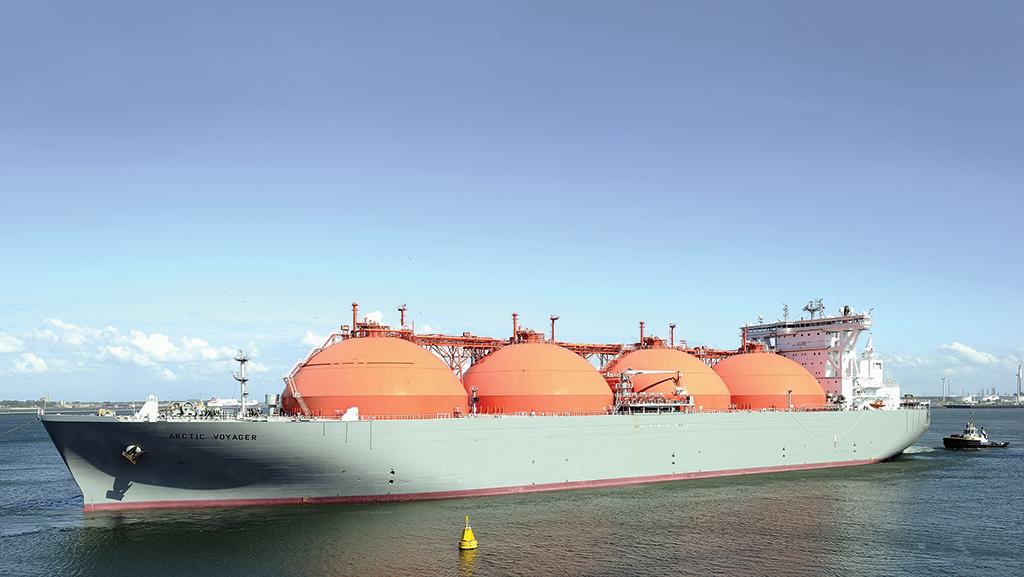Can Aviation Use Liquified Natural Gas To Reduce Its Carbon Footprint?

Ask the Editors: The Aviation Week Network invites our readers to submit questions to our editors and analysts. We’ll answer them, and if we can’t we’ll reach out to our wide network of experts for advice.
There is a lot of talk about hydrogen and sustainable aviation fuel (SAF). Both will take decades to ramp up production. Is there any merit in using liquified natural gas (LNG) as a short- and mid-term solution to reduce the carbon footprint of aviation?
Thierry Dubois, who writes on sustainable aviation as Aviation Week’s France Bureau Chief, responds:
The short answer is “yes.” However, given the required infrastructure change, it would imply that the follow-on permanent solution relies on biomass or a power-to-gas process to produce a fuel similar to LNG.
For a given amount of energy, LNG emits 25-30% less CO2 than conventional Jet-A1 kerosene. A precise percentage has yet to be measured in real-life conditions. In the 1980s, a Russian program used a Tupolev Tu-155 to successively try hydrogen and LNG, but the findings on LNG are not available.
Other benefits of LNG include an 80% reduction in nitrous oxide emissions, according to TGE Gas Engineering, a Bonn, Germany-based company that released a study in 2019. Burning LNG emits no soot, sulphur or aromatic compound, and contrails are reduced. Another benefit: Specific energy is greater than that of kerosene. A theoretical Airbus A340 flight from Munich to New York would burn 47 metric tons of LNG instead of 55 tons of Jet-A1, according to TGE’s calculation.
TGE was involved in a 2010-13 joint project with Airbus, Lufthansa, Hamburg Airport, engine manufacturer MTU and research center DLR. An LNG tank prototype designed for commercial aviation was successfully tested for fatigue, withstanding 25,000 load cycles. Combustion systems were estimated to need minor adjustments.
LNG is already used for road transport in large trucks and to power some passenger ships in Norway. This helps protect fjords from being disfigured with black haze, says Isabelle Moretti, a researcher at Pau University in France and former chief scientific officer at Engie, a major energy supplier in Europe. And natural gas is available in large quantities, notes Philippe Novelli, program director for propulsion and environment at French aerospace research office Onera.
But despite all these benefits and demonstrations, challenges remain. The hydrocarbon found in a gaseous state has to be liquefied to reach workable energy density. The liquefaction process consumes energy, albeit in reasonable proportions, says Moretti. LNG must be kept at a temperature of -170C (-274F). And there is always an evaporation phenomenon.
In terms of aircraft range performance, a problem may be the 20-30% lower density for LNG. For a given volume, the greater specific energy would only offset the lower fuel weight. The drop in range has yet to be precisely assessed but may not be prohibitive.
More critically, is it worthwhile to change aviation’s fuel infrastructure and continue to use a fossil fuel? The answer might be the use of LNG as a transition to SAF. Methane can be produced from biomass. It also can be the outcome of a power-to-gas process using atmospheric CO2 and renewable energies.






Comments
I am at a loss to understand why LNG would reduce contrails. The hydrogen fraction of LNG is higher than long chain hydrocarbons, wouldn't this generate more, not less water vapor in the exhaust?
Natural gas works for ships and cars with some compromise. Pressure tanks and cold temps do not make for a viable aircraft be it hydrogen or natural gas.